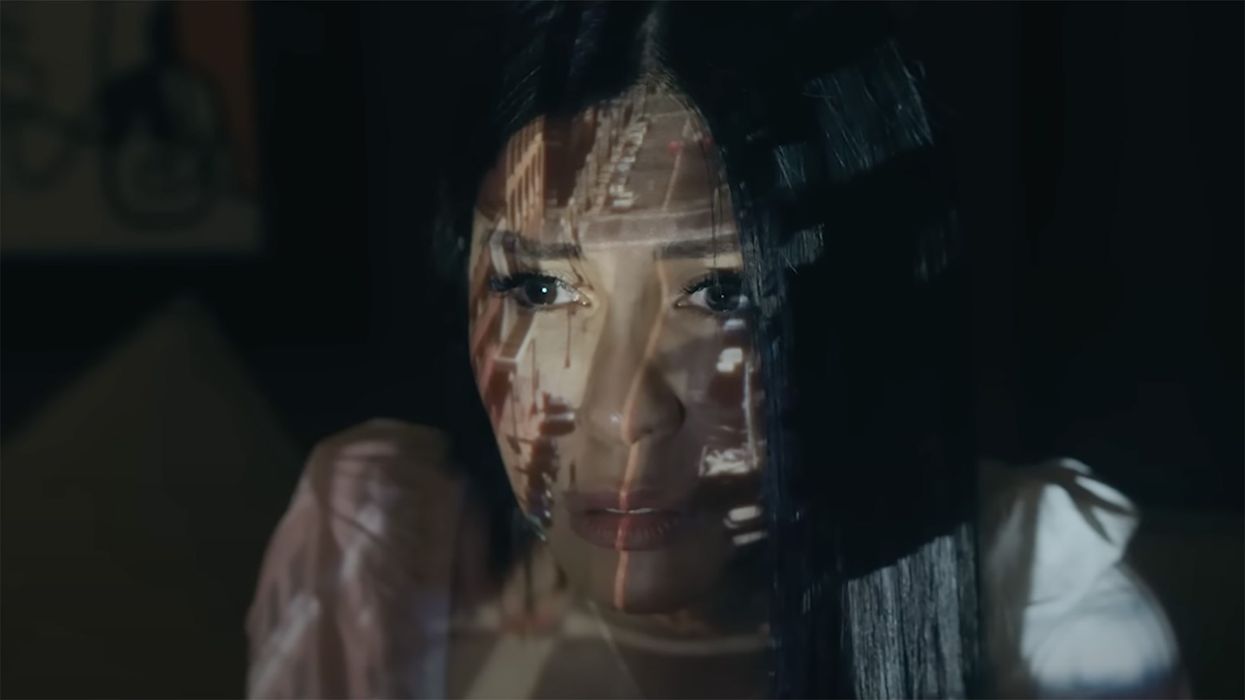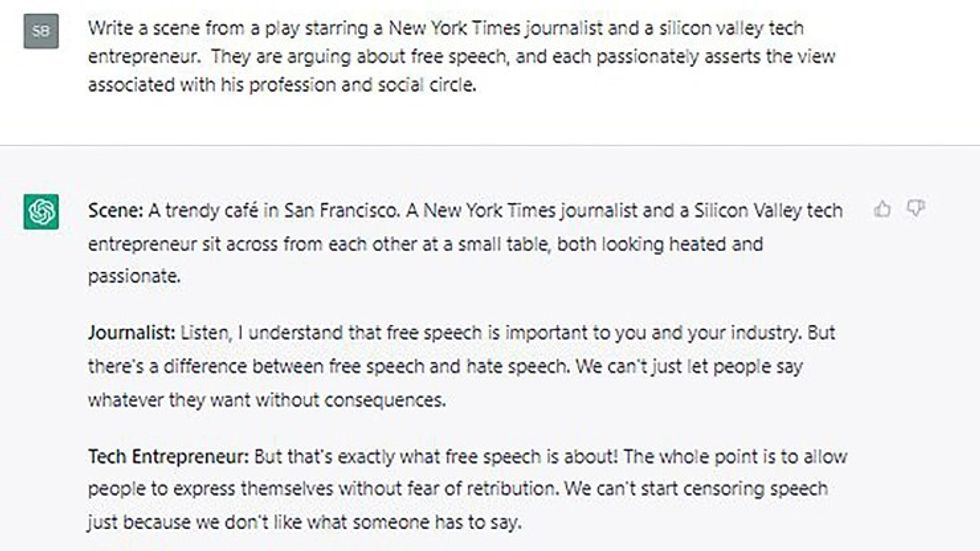This Film Was Written and Directed by AI—Here’s the How and What You Can Learn
Artificial intelligence can finally create a sense of drama, even if we do have to give it a hand.

So, it finally happened. An AI finally wrote and directed a film. Is it good? You can be the judge of that. But how AI was used in the workflow is an interesting case study on how these types of tools can help you create.
Filmmakers used a chatbot AI called ChatGPT to not only generate some ideas for a short film, but to also write the script, create a shot list, and direct the film. Is Hollywood about to be taken over by an algorithm? Well, maybe not just yet, but it will have a prominent place in the overall workflow. Let’s take a look and see what it can do.
It All Began on Twitter
“We used OpenAI ChatGPT to WRITE and DIRECT a film in a weekend,” said AI entrepreneur and literal rocket scientist Aaron Kemmer on Twitter. “My co-producer, who writes scripts for a living, was blown away when ChatGPT produced nearly ~50 scripts for us in 1 hour. This took months of work down to 1 hour.”

It was only about two years ago when a similar experiment was created using AI, and the results were so unreadable that the script couldn’t really be understood, much less shot. It was essentially a word salad with a moving image. Now, a few years later, AI has gotten so sophisticated, that it can not only create a viable story idea but also direct it.
Creating a Logline
Using an AI chatbot, Kemmer and his cohorts were able to come up with over 100 ideas and then 50 scripts for a short film in under an hour. The chatbot used artificial intelligence to further refine each idea when asked for more details until the complete idea had been hatched.

That first one might sound a lot like Stranger Things but is also generic enough to feel similar to The Goonies. A quick takeaway here is while these ideas won't get your script sold right out the gate, but can definitely give you a great start to figuring out what you what to write.
Taking the Next Step to Virtual Pre-Production
From there, Kemmer and the company wondered just how creative the AI could get, so they requested a shot list which meant that they were going to let the AI be the de facto director of the short film. The bot created 18 different camera shots, which Kemmer sent to his cinematographer for review.
“First, holy shit. Is this tech real,” asked Odyssey Flores, DP on the award-winning film Lola. “Second, can we get more details?”

Kemmer then requested the AI provide its preferences for camera positioning, the angle of the set, cast, lighting details, and even a color palette. The AI came back with details within the minus and even provided the DP with recommendations for which lens to use and focus decisions.

This added a few more shots to the shot list, and then the AI produced a series of images of what it expected the shots to actually look like. In the end, the ChatGPT AI provided the filmmakers with over 50 pages of notes for the producers to use in filming the short film.
After we had 22 detailed shots and the script, my co-producer took the idea of creating an AI-made film from a half-joke to a full-fledged reality. He lined up the video team, the actors, the set, and everything else needed.
Creating an Actual Film From an Artificial Idea
The next task of the virtual director was to decide on the proper costumes. Meanwhile, the producers proceeded to cast the short film and crew up for what promised to be a very interesting round of filmmaking. And the result was a rudimentary, but compelling short film called The Safe Zone, about an AI taking over the world.
Not exactly an Oscar winner, sure, but it does convey a clear sense of dramatic tension that shows just how far an AI has come in understanding story structure. Pretty impressive for a virtual filmmaker. Of course, credit has to go to the actors for providing the performance that took the basic dialogue to the next level and the producers who brought the idea to life. But the reality is, that an AI is now capable of being a serious storyteller. Couple this with an AI that is able to generate original artwork and even very realistic-looking virtual actors, how long will it be before the AI can perform as well as direct itself and in multiple roles?
Kemmer said of the results that AI is changing the world, and as AI matures, so will virtual storytelling. “I could easily see AI leading to personalized movies,” Kemmer surmised. “where you can see any variation of any film you’ve ever wanted. Watch Tom Cruise play as Iron Man battling Darth Vader ... or an infinite number (of) ideas.” Does this mean that in a few years, we'll all be without a job? Will studios decide to go completely artificial and create movies with a computer?
Disney made a Chip n Dale's Rescue Rangers film that played with this very idea. In the film, the animated actors were cut up and repurposed into new ideas, after having disappeared and then remade into new characters. A mystery that the Rescue Rangers managed to solve and prevent from going any further. But in the virtual world, things are progressing so quickly, is it already too late to stop it?
A Potential Legal Gray Area
There could be a wrinkle, however. Who would own the copyright? We’re no copyright lawyer, but a recent legal precedent, set by the case of a monkey who took a picture with a camera, stated that a copyright cannot be owned by anyone other than a human being who actually had a hand in the creation of the intellectual property. So unless laws are changed, any derivative works made by an AI could actually be in a legal gray area.
Kinda gives the name Alan Smithee a whole new meaning, doesn’t it?
- This AI Program Will Cast Your Movie or TV Show for You ›
- Soundraw Lets You Channel Your Inner Hans Zimmer With AI ›
- Can't Find a Real Location? Film on an AI Background Instead ›
- Why Do AI-Created Fake Film Trailers Scare Us So Much? ›
- What Can You Learn From 'The Mass,' a Short Film Made by AI in 24 Hours ›
- Is The Future of VO AI-Powered Celebrity Voices? ›
- Can You Copyright AI Art? ›
- How to Write Short Films ›
- OpenAI’s Insanely Powerful Text-to-Video Model ‘Sora’ is Here ›
- Sora Open AI Hollywood ›
- Here’s How Sora’s AI Video Could be Good for Filmmakers ›












